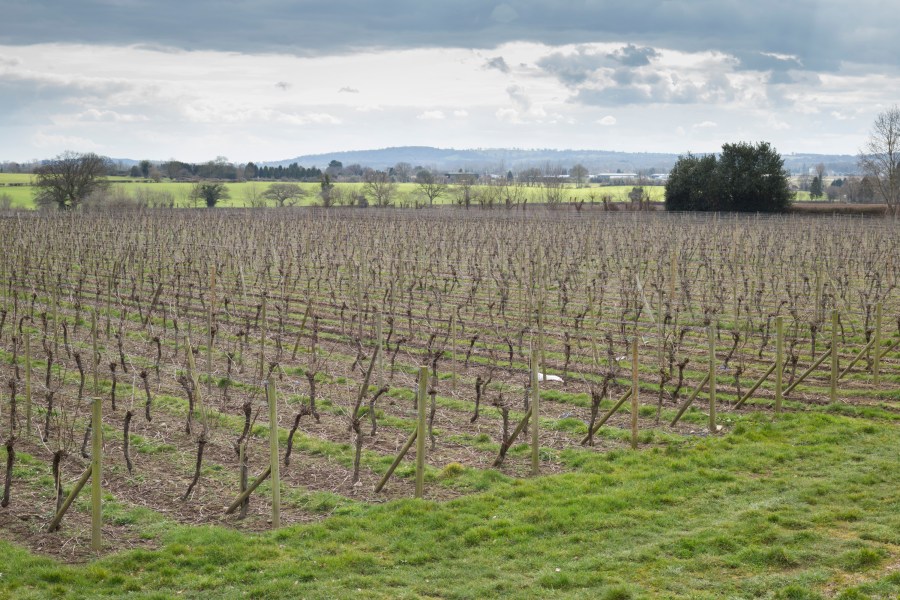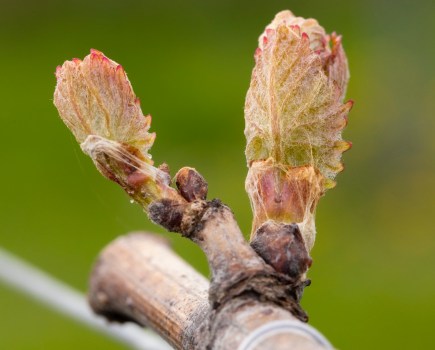Over the weeks I occasionally find myself going back to thoughts about matters that caught my imagination during harvest.
This was another ‘first’ for me, to work through the grape harvest season in an English winery. Thank you to the team at Halfpenny Green Vineyards, who took me in.
Whilst I have been involved in wine making on many occasions, and in a range of differing types of wine production, there was a lot that was new to me at the Vickers family winery in south Staffordshire; with much to be learnt from the experience.
With something like 350 tonnes of grapes coming in, (I think,) and perhaps 150 odd differing tanks resulting from this, then this occasion will stick in my memory as one of the most diverse wine experiences that I have encountered.
Interestingly the range of grape varieties, the differing levels of ripeness from around the country, the possibilities in styles available in resulting wine all stand to make the UK an interesting place in the world of wine.
But it wasn’t all simple, smooth ‘plain sailing’.
I’d heard previously that there were hopes for a year of unusually good wines.
Surely this was to be the case as there seemed little doubt that the summer was a growing season of undoubted excellence. So what could go wrong?
The winery was a complex operation that endeavoured to make the best out of all situations. As such it made its own ‘in house’ wines from its own grown grapes.
Grapes were also bought in from other growers to bulk up this volume. A contract wine making service was offered to those that had a vineyard, but needed wine making services.
This was also, rather generously, offered to people with what in fact were barely commercial small quantities of grapes.
None of this troubled me, apart from the work load, except aspects of communication could have been better.
Let me explain.
I’ve been involved in hand harvesting of grapes in at least half a dozen countries, and rarely have I encountered deliveries of grapes in such a poor shape as some of those I encountered this year.
‘Fit for purpose’, and how that applies to grapes
Grapes when clean and ripe, smelling fresh and being of an agreeable colour make a wine making team feel good about working with them.
So what to do with grapes that had more powdery mildew than was good for them, as undoubtedly the resulting wine would be badly compromised. Could we be expected to turn a ‘sows ear into a silk purse?’ Would this wine be well received when we sent it back to the original company, or attempted to blend it into one of the house wines?
So in a supposed good year for growing, what went wrong, who took their ‘eye off the ball’ and failed to give adequate spray coverage to the crop?
And given that all of these grapes were hand harvested, how come there was inadequate training and supervision for the pickers to allow this to happen?
This type of scenario occurred time and time again, where much of the problems could be seen as starting in the vineyard and through communication, or the lack of it.
Take another scenario, a not uncommon occurrence with varying Pinot types.
These are known for their tendency to produce second set clusters.
Whilst these can be so hard and unripe that if they go into a whole bunch pressing, not many of them detach off the stem, and split open. If they do then their high acids are somehow part of a base wine that is part of the process in sparkling wine… I’m being optimistic!
However in a year when people believe that the grapes carry a higher degree of ripeness, there are requests from the growers that the winemaker should pull out the stops, and make a notable red wine… except that is unlikely to happen.
When de-stemming the grapes, some of these second set clusters, get through the process; we did not have a sorting table and I really do not think that anyone was told we did have one. So very soon bobbing around with the darker berries were a mix of mottled under-ripe berries, all releasing an acid not greatly favoured in a red wine; so how come they were picked in the first place. Sadly this was hardly fair on the wine making team.
Likewise that historical backbone of the UK sparkling wine industry, the Seyval.
Generally good size clusters, clean/minimal rot, looking optimistic… until you taste them.
It is not the taste as such that troubled me, and to be frank how could you find a taste with the acid levels occasionally being so high, but what did trouble me was the thought that too many people did not know when to pick.
They simply did not follow a process of monitoring the increasing ripeness. By this I mean the reduction of acid as much as the increase in sugar.
Whilst it is possible, legally but I question morally, to put so much sugar into a wine that you end up with an alcohol level roughly where you’d like it, extensive chemical de-acidification can leave a ‘shadow’ of its actions in the end wine; distasteful. This can happen to all wines though.
Thus a better system in the vineyard of monitoring the ripening process would really help; training, or talking with the right people, (possibly your wine maker) can be a great help.
In my earlier days of vineyard management, I was responsible for delivering three differing varieties of grapes, which I did for 10 years; I see matters from ‘both’ sides.
People do worry about Botrytis, and in part it is about the easiest thing to see in the vineyard. Paradoxically it is probably the least of a vineyards problems.
A little considered fining perhaps, but the settling of the juice prior to ferment goes a long way in cleaning it up, except with red wines.
Anything that resembles a dead mouse should not be picked, but that is not too difficult to get across to pickers.
I was surprised, even delighted, that we did not encounter ‘sour rot’ Botrytis, bunches that smell of vinegar; this is perhaps more common in warmer climates, and where I’ve encountered lots of it.
Likewise there were no indications of infestations of the Suzuki fly, or similar, whose actions can down grade the quality of a sufficient proportion of berries, so as to destabilise a wine.
A little ‘slip skin’ early stage Botrytis came in on occasions, but not enough to worry about.
In short the message to pickers could be this; If you do not want to put those grapes into your mouth, then we do not want them in our, or your, wine.
As a wine maker, I’d say, and I think that my colleagues would agree with me, that I do not wish to see them delivered to the winery, as they are simply not fit for purpose.
Having said all that…
There were many deliveries of grapes that were of great interest.
Straight off I’d say this; good site selection and attentive vineyard management allows excellent grapes to be grown far and wide across the country.
I saw too much to remember the details of some of them, but I had never previously thought that I’d see good grapes grown from north of the Humber, yet they came in. (from north east Yorkshire no less.)
From just south of the Humber estuary we received some Muscaris, clean and with excellent figures for sugar and acid levels. This is a relation to the Solaris variety, that is now quite widely planted around the country, and elsewhere like Poland too, and I’m hoping to try some excellent UK grown and made wines from these types of grapes very soon.
There were quite a lot of what could be termed as ‘previous generation’ crossings or resistant grapes as well.
These were good in attentive hands, but this is not always the case where perhaps some people might have erroneously thought that they could grow them with almost no attention.
Lots of Rondo, sometimes good enough but rarely outstanding, sadly.
Orion and Phoenix as whites with reds also like the occasional Regent, some Triomphe d’Alsace, and right at the end, a few crops of Divico.
My colleagues in Europe have told me about this new variety, but it was here that I first got to see it, and work with it. A bit late in ripening, but whilst perhaps low in yield, great colour and possibly a valid blending addition.
I found many new experiences in winemaking whilst here, but I came away wishing for a higher level of desire to achieve. Seeking better wine through newer styles and creative wine making perhaps but however it comes about, more effective communication right across the spectrum is needed.
I talked about finding a white with some botrytis, or indeed a lot, and putting it into a press, cranking it up to max pressure, then leaving it to ooze it’s magical honey, drop by drop, through the night, except it never happened; my loss as I love these wines.
Strangely, I felt, a more realistic lost opportunity might have been what could have been ‘skin contact/macerated whites’, or orange wines.
The Siegerrebe had a low level of acid that baffled me, like many warmer climate red’s, and as such might have done well if handled like a red. Maybe somebody has, somewhere…
Whatever comes next there are boundaries to be pushed, and with rules broken then I believe that there are possibilities here for wines to be created that differ greatly to the tradition in stylistic leaning.




